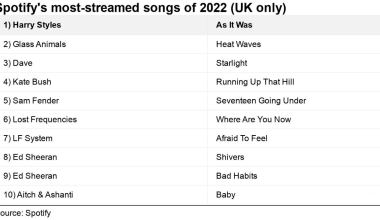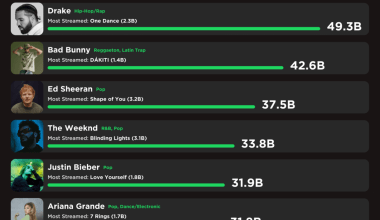Hip hop is more than just music—it’s a cultural movement. Emerging in the Bronx, New York, during the 1970s, the hip hop genre has grown to influence music, fashion, language, and politics. From its origins in block parties to becoming a global phenomenon, hip hop remains a voice for marginalized communities and a platform for self-expression.
In this blog, we’ll explore the history, elements, and ongoing evolution of the hip hop genre while diving into its cultural significance.
What Is Hip Hop?
The hip hop genre encompasses more than rap music. It’s a lifestyle built around four key elements:
- Rapping (MCing): The art of rhythmically speaking or rhyming to a beat.
- DJing: Mixing and scratching records to create unique sounds.
- Breakdancing: A dynamic dance style often performed to hip hop beats.
- Graffiti Art: Visual expression through street art and murals.
Together, these elements represent the core of hip hop culture.
The History of the Hip Hop Genre
1. The Birth of Hip Hop
- Where: The Bronx, New York City.
- When: Early 1970s.
- Key Figures: DJ Kool Herc, Grandmaster Flash, Afrika Bambaataa.
- What Happened: At block parties, DJs began isolating instrumental breaks from funk and soul records, while MCs entertained crowds with rhythmic rhymes.
2. The Golden Age of Hip Hop (1980s-1990s)
- Characteristics: Complex lyrics, diverse styles, and socio-political themes.
- Key Artists: Run-D.M.C., Public Enemy, Tupac Shakur, The Notorious B.I.G., N.W.A.
- Milestones:
- The rise of record labels like Def Jam and Death Row.
- Emergence of subgenres like gangsta rap and conscious hip hop.
3. The Mainstream Era (2000s-Present)
- Characteristics: Global reach, genre fusion, and digital dominance.
- Key Artists: Jay-Z, Eminem, Drake, Kendrick Lamar, Nicki Minaj, Cardi B.
- Milestones:
- Streaming platforms revolutionizing music distribution.
- Hip hop becoming the most popular music genre globally.
Core Themes in Hip Hop Music
The hip hop genre often addresses themes that resonate deeply with listeners:
- Social Justice: Tracks highlighting inequality and systemic racism.
- Personal Struggles: Stories of hardship, perseverance, and triumph.
- Celebration of Life: Party anthems that bring people together.
- Cultural Pride: Representing heritage and community identity.
- Materialism: Exploring success, wealth, and luxury.
The Evolution of Hip Hop Subgenres
1. Gangsta Rap
- Focus: Street life, violence, and survival.
- Key Artists: N.W.A., Ice Cube, 50 Cent.
2. Conscious Hip Hop
- Focus: Social issues and positive messages.
- Key Artists: Common, Talib Kweli, Mos Def.
3. Trap Music
- Focus: Hard-hitting beats, autotuned vocals, and tales of hustle.
- Key Artists: Future, Migos, Travis Scott.
4. Boom Bap
- Focus: Traditional beats and lyricism.
- Key Artists: Nas, Wu-Tang Clan, KRS-One.
5. Alternative Hip Hop
- Focus: Experimental sounds and themes.
- Key Artists: OutKast, Kanye West, Tyler, The Creator.
Hip Hop’s Influence Beyond Music
The hip hop genre extends its influence into various aspects of society:
1. Fashion
- Oversized clothing, sneakers, and gold chains became hip hop staples.
- Brands like Adidas, Puma, and Gucci embraced hip hop aesthetics.
2. Language
- Slang terms like “dope,” “lit,” and “flex” entered everyday vocabulary.
3. Activism
- Artists like Tupac and Kendrick Lamar use their platform to address social issues.
4. Film and Media
- Movies like 8 Mile and Straight Outta Compton celebrate hip hop’s legacy.
5. Business Ventures
- Many hip hop artists have launched successful businesses in fashion, liquor, and media.
Challenges in the Hip Hop Genre
Despite its success, hip hop faces criticism and challenges:
- Misrepresentation: Stereotypes about violence and misogyny.
- Cultural Appropriation: Debate over non-black artists adopting hip hop elements.
- Oversaturation: Commercialization affecting the genre’s authenticity.
Tips for Aspiring Hip Hop Artists
- Find Your Voice: Be authentic and develop a unique style.
- Master Lyricism: Focus on wordplay, metaphors, and storytelling.
- Learn Music Production: Experiment with beats and mixing.
- Engage with the Culture: Understand the history and roots of hip hop.
- Collaborate: Work with other artists to expand your skills and reach.
The Future of Hip Hop
1. Technology and AI
- AI tools like ChatGPT are aiding lyric and beat creation.
2. Globalization
- Hip hop is embracing influences from regions like Africa, Asia, and Latin America.
- Platforms like TikTok are boosting visibility for emerging artists.
Conclusion: Celebrating the Hip Hop Genre
The hip hop genre continues to evolve, breaking boundaries and inspiring millions worldwide. Its roots in resilience, creativity, and community remain strong, making it one of the most influential movements in modern history.
Whether you’re a fan, artist, or cultural observer, hip hop offers a rich tapestry of stories, rhythms, and emotions to explore.
For further reading, explore these related articles:
For additional resources on music marketing and distribution, visit Deliver My Tune.






